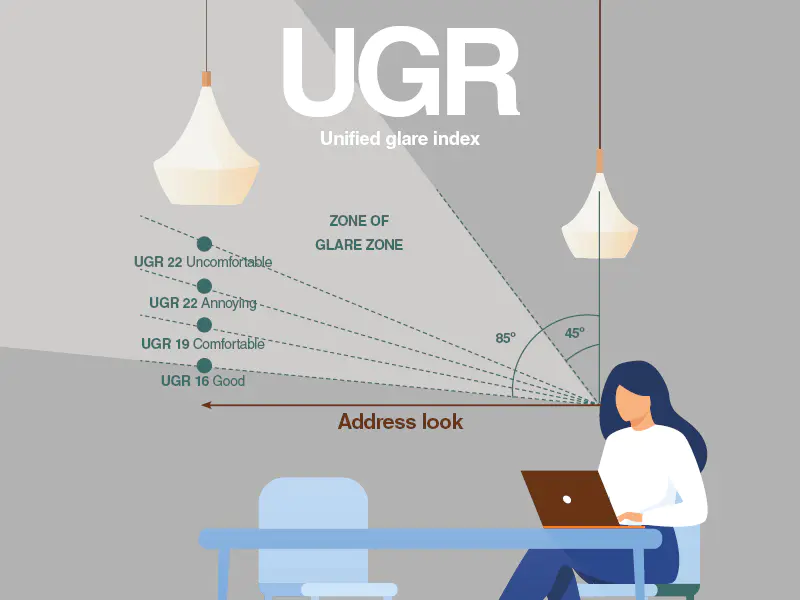When discussing lighting, we often focus on light intensity, color temperature, and energy impact. However, one of the key factors that can significantly affect lighting quality and user comfort is UGR, or Unified Glare Rating. UGR is a measure for assessing the level of discomfort caused by glare from light sources. In this blog, we will explore what UGR is, why it is important, and how it can be controlled and applied in various environments.
What is UGR?
Unified Glare Rating (UGR) is a standardized method for evaluating the level of discomfort glare that a luminaire can cause in a space. Developed by the International Commission on Illumination (CIE), the UGR scale ranges from 10 to 30, where lower values indicate a lower likelihood of glare, and higher values indicate a higher likelihood of discomfort glare. For example:
- UGR
- UGR 10-19: Good (glare is acceptable in most workspaces)
- UGR 20-22: Acceptable (glare may be noticeable but not overly disturbing)
- UGR 22-25: Borderline (glare can be unpleasant)
- UGR > 25: Unacceptable (glare is very unpleasant)
Why is UGR Important?
Glare can significantly impact the comfort, productivity, and health of space users. High levels of glare can cause eye strain, headaches, and a general sense of discomfort. This is especially important in work environments such as offices, schools, and hospitals, where visual comfort is crucial for efficient and safe work.

UGR is essential for:
- Improving the Work Environment:Reducing glare can improve employee concentration and productivity.
- Health and Well-being: Prolonged exposure to high levels of glare can lead to vision problems and overall health issues.
- Regulatory Compliance: Many lighting standards and regulations include guidelines for UGR, making it an important factor in lighting design and implementation.
Controlling and Reducing UGR :
There are several ways designers and lighting engineers can control and reduce UGR in rooms:
- Using Luminaires with Appropriate Diffuse Optics: Diffuse optics help distribute light evenly, reducing direct glare.
- Proper Positioning of Luminaires: Placing luminaires outside the direct line of sight of users can significantly reduce glare.
- Using Reflectors and Shields: Reflectors and shields can direct light to desired areas and prevent unwanted light spread.
- Interior Design: Materials and colors used in the interior can affect light reflection and glare levels.
Applying UGR in Different Environments
- Offices: In offices, a low UGR (below 19) is desirable to ensure employee comfort during long working hours.
- Schools: In classrooms, controlling glare is crucial for improving concentration and reducing eye strain for students.
- Hospitals: In hospitals, adequate lighting without unpleasant glare is necessary to ensure a pleasant environment for patients and efficient work for medical staff.
Conclusion
Unified Glare Rating (UGR) is a critical aspect of lighting design that should not be overlooked. By understanding and properly applying UGR principles, we can significantly improve lighting quality, creating more comfortable, healthier, and more productive environments. Whether it is an office, school, or hospital, controlling glare is key to achieving optimal conditions for work and stay.
If you are planning a new lighting project or want to upgrade an existing solution, consider UGR as a crucial factor for achieving the best results. Contact lighting experts to get advice and solutions tailored to your needs. Quality lighting is an investment in health, productivity, and the overall well-being of space users.











